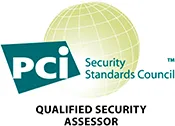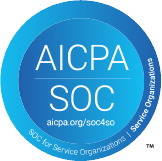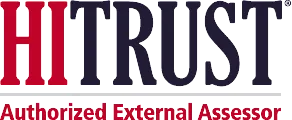When you partner with BARR for SOC 1 compliance, our expert SOC 1 auditors will help to increase transparency and confidence in your stakeholders while simplifying the entire compliance process and easing the burden on your team.

SOC 1 Compliance
Get Assurance for You and Confidence for Your Customers with a SOC 1 Report
Simplify Financial Reporting with BARR Advisory
A SOC 1 report is used by organizations that outsource a specific service or system that likely impacts their internal controls over financial reporting (ICFR). SOC 1 compliance standards are set by the American Institute of Certified Public Accountants (AICPA), and report findings are used to assess and communicate a firm’s data security of financial information, including financial statements and other client data.
A control objective outlines the target or purpose of a specific group of security controls within service organizations. SOC 1 control objectives are not pre-defined, and may differ for each organization. The control objectives should cover all major aspects of the organization relevant to the SOC 1 report, and usually consist of both general information technology controls (i.e., logical access, change management, and operations) and business process controls (i.e., completeness and accuracy of transaction processing). Depending on the scope, there can be anywhere between 10 and 30 control objectives in a SOC 1 report.
Organizations that should consider a SOC 1 report include Cloud ERP service providers, financial services, payroll processing, healthcare claims processing, and data center colocation. If your organization plays any role in client financials, then a SOC 1 report may be right for you.
A SOC 1 report demonstrates the effectiveness of your security processes and procedures around financial reporting to your clients. Not only will this differentiate your organization from competitors, but additional benefits include:
- Increased level of trust from your clients, resulting in client retention and acquisition;
- Less need for frequent audits, resulting in decreased cost for your organization;
- Improved risk management and control; and,
- Satisfaction of audit requirements.
Types of SOC 1 Reports
Type 1 Report
The SOC 1 Type 1 Report (referred to as a point-in-time report), includes an opinion over the suitability of the design of controls at the service organization at a specific point in time. An initial type 1 report often serves as the starting point for subsequent type 2 reviews.
Type 2 Report
The SOC 1 Type 2 Report (referred to as a period of time report) includes an opinion over the suitability of the design of controls at the service organization and the operating effectiveness of the controls throughout a specified period of time. This type of report is often issued annually.
Contact Us for a Free Consultation
Speak with a BARR specialist about your security and compliance needs.
Why BARR for SOC Reporting
We’re here to help you! Contact us to speak with a BARR specialist. We offer a full range of SOC compliance consulting and reporting services, including SOC 1, SOC 2, SOC 3, and SOC for Cybersecurity.
Client Testimonials
Frequently Asked Questions
SOC 1 compliance refers to an organization’s adherence to a framework that assesses internal controls over financial reporting (ICFR), particularly for outsourced services impacting financial data security. A SOC 1 compliance report helps assure clients and stakeholders that effective controls are in place to protect financial information. It’s important to note that SOC 1 is not a certification, so organizations who receive their SOC 1 report are said to be “SOC 1 compliant” rather than “SOC 1 certified.”
SOC 1 compliance comes with multiple benefits, including increased level of trust from your clients, resulting in client retention and acquisition; less need for frequent audits, resulting in decreased costs for your organization; improved risk management; and satisfaction of customer and stakeholder compliance requirements.
After your SOC 1 report is issued, it is valid for one year from the issuance date. Organizations will have to undergo another audit each year to continue to maintain SOC 1 compliance, which gets easier year over year since the necessary controls are already in place.
SOC 1 reports are intended to be shared privately with necessary stakeholders, including prospective customers and partners. Since a SOC 1 report often contains sensitive information, most businesses require signed non-disclosure agreements prior to sharing a SOC 1 report.
SOC 1 is not a mandatory legal requirement for any organization. However, some customers and third parties may only choose to work with vendors that have a SOC 1 report—meaning without one, you could be missing out on certain customers and blocking your company’s growth.
A SOC 1 report can take several weeks or months depending on the type of audit, scope, and complexity of the organization’s environment. Learn more about each step of the SOC 1 compliance process here.
The SOC 1 Type 1 Report (referred to as a point-in-time report), includes an opinion over the suitability of the design of controls at the service organization at a specific point in time. An initial type 1 report often serves as the starting point for subsequent type 2 reviews.
- A SOC 1 report is used by organizations that outsource a specific service or system that likely impacts their internal controls over financial reporting.
- A SOC 2 report is intended to meet the needs of a broad range of users that need detailed information and assurance about the controls at a service organization. The report can play an important role in oversight of the organization, vendor management programs, and internal corporate governance and risk management processes. The report can be distributed to an organization’s stakeholders including user entities, CPAs providing services to such user entities, regulators, and business partners.






